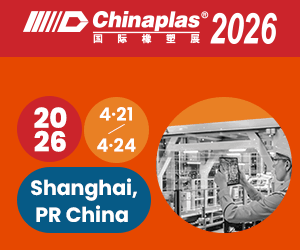

Polylactic Acid (PLA): Eco-friendly and Nature-based
The global interest in sustainability has spotlighted bioplastics
and biomass plastics (i.e., plastics made from plants) like Polylactic Acid (PLA).
We’re frequently asked, “Is
PLA actually plastic?” The answer: Yes.
PLA
exhibits all the same properties as its petroleum-based siblings but uses
renewable and compostable resources. Let’s learn more about this eco-conscience
alternative.
What
are PLA resins?
Typically
represented as (C3H4O2)n , Polylactide or polylactic acid resins are biodegradable thermoplastics built on lactic
acid monomers. PLA uses the fermented
starch (glucose) of a plant like corn and sugar cane to produce lactic acid,
which is chemically reacted to produce a compound called lactide and then
polymerized to produce PLA.
PLA is both a biomass plastic and a biodegradable plastic.
While it has less environmental impact, it should be noted that it does not
decompose naturally; however, PLA composting is different from traditional
composting. Biodegradable PLA is hydrolyzed through fermentation heat and
moisture in compost and ultimately decomposed into carbon dioxide and water by
microorganisms.
Polylactic
Acid Properties
PLA essentials have a wide range of physical and
mechanical properties, making it environmentally and esthetically friendly. PLA
features include:
- Temperature:
The PLA melting point, which ranges between 150°C and 180°C, makes it easy
to process using injection molding and 3D printing. - Density:
Compared to other common plastics, PLA density is relatively firm, giving
it a solid feel and excellent structural integrity. - Tenacity:
The tensile strength of PLA ranges from 50 to 70 MPa, which can be
affected by additive blending. - Stability:
PLA chemical resistance means it doesn’t easily degrade when exposed to
reasonable moisture, oils, fats and alcohol (including ethanol). - Elasticity:
PLA elastic modulus (also called PLA Young’s modulus) is relatively high,
making it ideal for items where shape retention is important. - Color:
PLA film is naturally transparent and often used when a clear, glossy
appearance is needed.
Additional PLA physical property values:
ITEM | VALUE | |
Specific gravity | 1.24-1.25 | |
Glass transition temperature | 52-60°C | |
Crystal melting point | 145-175°C | |
Tensile property value | Yield strength | 60 MPa |
Breaking strength | 55 MPa | |
Breaking elongation | 6% | |
Elastic modulus | 3,500 MPa | |
Izod impact strength | 3.5 kj/m2 |
While the benefits of PLA are attractive, it does have
disadvantages, like:
- Heat
resistance: The PLA softening temperature (i.e., glass transition
temperature) range limits its use in high-heat settings. - Poor
impact strength: In comparison to other plastics, PLA yield strength makes
it brittle and susceptible to cracking under stress. - Low
durability: PLA dissolves, and structural integrity is compromised when
exposed to acids, bases and solvents. - Limited
mechanical strength: PLA does not hold well to repeated mechanical stress
and can fail under these conditions.
Materials are being developed to improve
these properties. For example, there are methods to make petroleum-based
plastics into polymer alloys, use fillers as reinforcement and mix PLA with
different configurations.
Polylactic
Acid Uses
PLA is popular thanks to its versatility,
biodegradability, manufacturing simplicity, and more because it maintains
product performance while reducing carbon footprint. It is commonly found in:
- Packaging:
Since it meets food hygiene standards, PLA packaging is frequently used
for disposable cups, containers and wraps - Medical
devices: Using PLA in sutures and implants like screws and plates
eliminates the need for surgical removal because they degrade on their own
over time. - Textiles:
PLA fibers are known for their softness and moisture-wicking. They are
used in activewear, undergarments, upholstery, baby wipes and hygiene
products. - Agriculture:
PLA resins can be converted to mulch films that limit weed growth and
moisturize soil while decomposing naturally.
Though PLA is not yet as commonly used as
petroleum-based plastics and still has some issues to overcome, the market is
expected to expand as environmental impact continues to gain momentum.
Popular articles
From Waste to Climate Action: Turning Coffee Grounds and Plastic into Carbon Capture Tools
03/12/2025
By Kanamori Web Editorial Team
2min read
Shanghai Plastics and Rubber Fair 2026 to Host Over 4,600 Exhibitors
24/11/2025
By Kanamori Web Editorial Team
2min read
“Chemical Sorting” Technology Enables Over 99% Purity in Recycled Automotive Plastics
18/11/2025
By Kanamori Web Editorial Team
2min read





